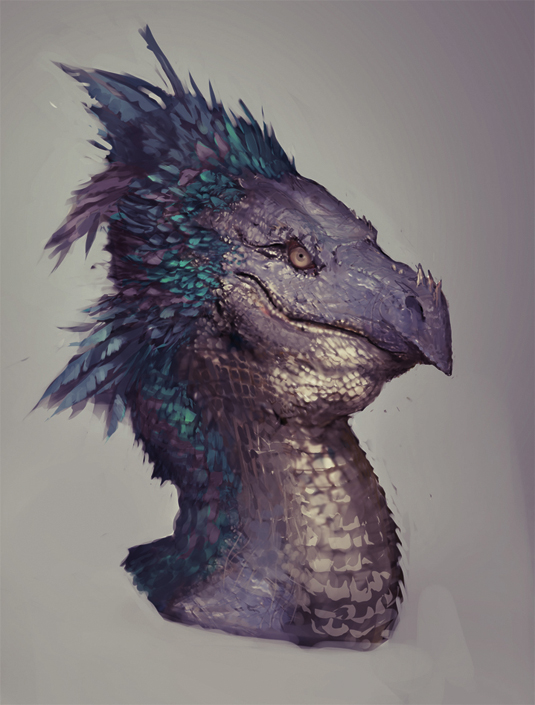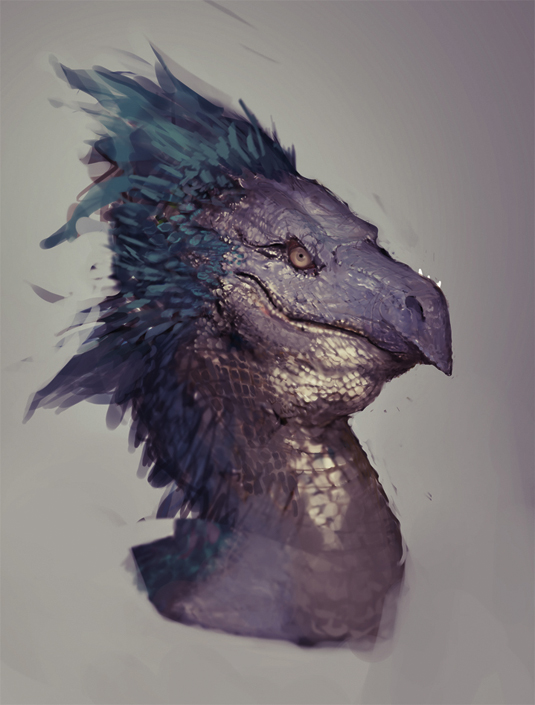How to draw scales and feathers like a pro
Concept artist Jace Wallace offers some quick and easy tips for painting scales and feathers.

The fantastic thing about drawing mythical creatures like a feathered dragon is that feathers are very similar in structure to scales. Feathers and scales are both typically round-diamond shapes that overlap each other in an offset manner.
One problem with painting scales is that they can become a bit repetitive and therefore create a lot of visual noise. Because dragons are traditionally flying reptiles, the first thing I do is find reference photographs of alligators and large birds.
Alligators are great as reference subjects because they have many different types of textures that make up their skin. The face of an alligator is generally smooth, while their backs become rougher with larger, spiky scales.
This is similar to how the feathers of large birds work as well: small feathers in the face with large crowning feathers on the back of the head. Now all I have to do is visualise how the feathers and scales will transition. A simple solution is to have the feathers emerge from underneath the scales, starting small and growing in size the denser the feathers become. For more on this, see this guide to how to draw feathers.
01. Silhouette stage

The Shoebill is a prehistoric-looking bird so I use it as my start point. I begin with a dynamic silhouette. After sketching that out, I place down basic colours. Following my alligator references, I paint the upper body parts in cool colours and the chest with a warmer, paler colour.
02. Can you tell what it is yet?

I use three different types of scales for the skin texture: the white ones are smaller and the most feather-like. I use these scales to transition into the feathers. In areas where the feathers start emerging, I make the scales more chaotic, as if they're bursting out from under the scales.
03. Dark pass

The Lasso tool is what I use most when defining feathers. After I have an area Lassoed, I paint the edges with a large Round Soft brush. Once I get down all the highlights, I go back with a darker colour and paint the cast shadows under each feather to gain a sense of the depth.
This article originally appeared in ImagineFX.
Like this? Read these...
- How to master the art of drawing hands
- Free Photoshop brushes every creative must have
- Great examples of doodle art

Thank you for reading 5 articles this month* Join now for unlimited access
Enjoy your first month for just £1 / $1 / €1
*Read 5 free articles per month without a subscription

Join now for unlimited access
Try first month for just £1 / $1 / €1
Get the Creative Bloq Newsletter
Daily design news, reviews, how-tos and more, as picked by the editors.
